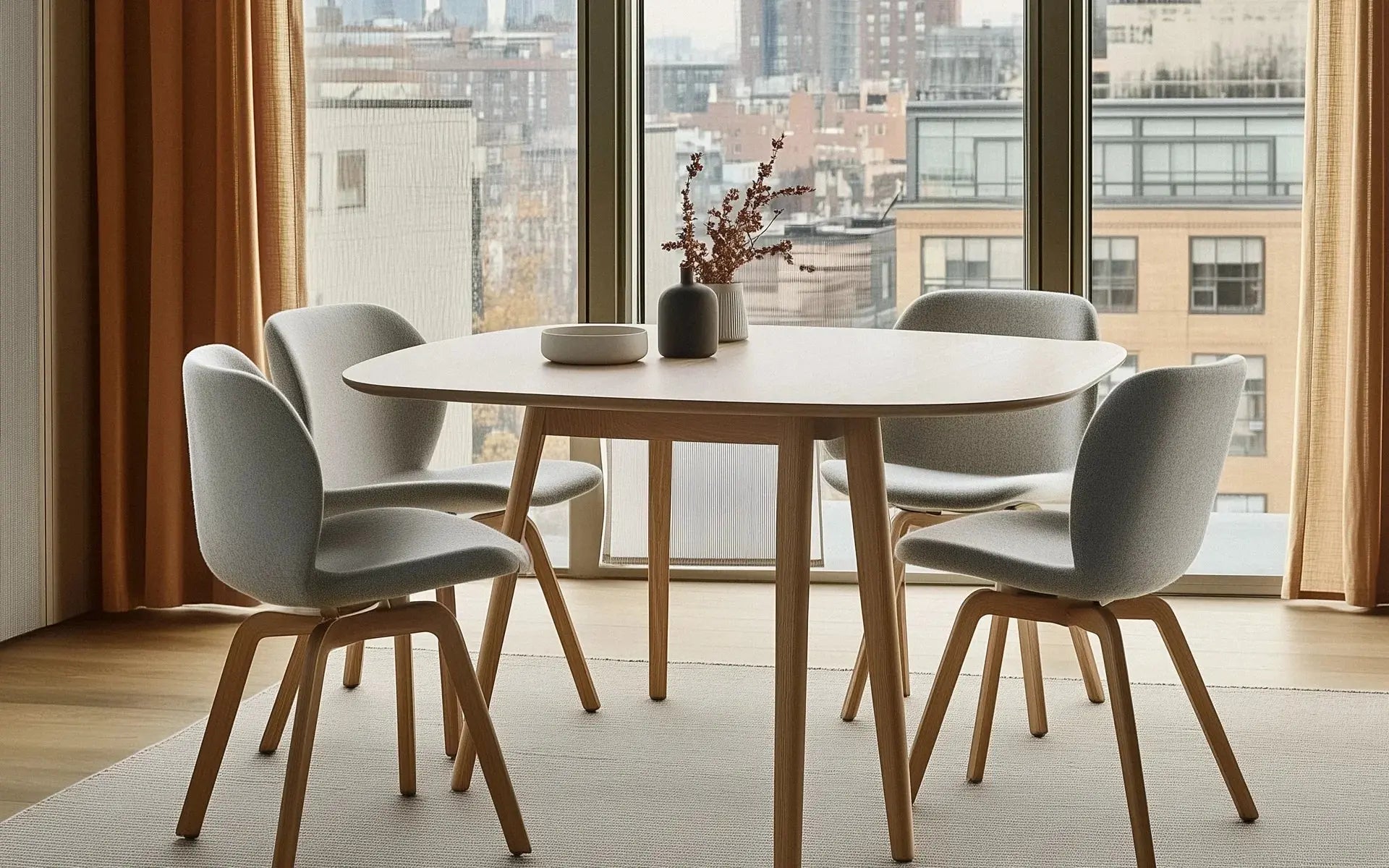EXPLORE HOW CURVED MINIMALISM COMBINES CLEAN LINES WITH SOFT, ORGANIC FORMS TO CREATE SPACES THAT ARE BOTH STYLISH AND INVITING.
Curved minimalism is a design philosophy that elegantly merges the clean, straightforward lines of modern design with the gentle, organic curves of nature.
This approach brings a sense of balance and warmth to minimalist spaces, transforming them from stark and functional to welcoming and comfortable. By incorporating rounded forms into furniture, decor, and architecture, curved minimalism offers a softer, more approachable take on contemporary design, making it perfect for those who value simplicity without sacrificing comfort.
The beauty of curved minimalism lies in its ability to create spaces that feel both dynamic and serene. While traditional minimalism often emphasizes sharp lines and stark contrasts, curved minimalism introduces smooth, flowing shapes that add a sense of movement and harmony. This subtle shift in design language not only enhances the visual appeal of a space but also creates an environment that feels more natural and inviting.


The Science Behind Curved Minimalism
Curved minimalism is more than just a design trend; it’s a reflection of how our brains respond to shapes and forms in our environment. Research has shown that people naturally gravitate towards rounded shapes over sharp angles, as curves are perceived as more welcoming and less threatening. This psychological response makes curved minimalism particularly effective in creating spaces that feel safe, calming, and comfortable. The fluidity of curved forms also mirrors the organic shapes found in nature, further reinforcing the connection between the built environment and the natural world.
Incorporating curved elements into minimalist design also enhances the sense of flow within a space. Curved lines guide the eye smoothly from one area to another, creating a continuous visual experience that feels cohesive and balanced. This seamless integration of form and function is what makes curved minimalism so appealing—it offers the clarity and simplicity of minimalism while introducing the warmth and comfort of organic shapes.
How to Incorporate Curved Minimalism into Your Home
Integrating curved minimalism into your home can be done through thoughtful furniture and decor choices. Start by selecting key pieces with rounded edges, such as a sofa with a gently curved back, a circular coffee table, or an arched floor lamp. These elements can instantly soften the look of a room and create a more inviting atmosphere. Pair these curved items with minimalist accessories in neutral tones to maintain the clean, uncluttered aesthetic that defines this design style.
In addition to furniture, consider architectural details that incorporate curves. Arched doorways, rounded windows, or even a curved wall can add a sense of elegance and fluidity to your space. Lighting is also crucial in curved minimalism—opt for fixtures with soft, rounded shapes that complement the overall design. The goal is to create a harmonious environment where every element works together to enhance the sense of calm and balance.
Curved minimalism offers a refreshing take on modern design, blending the simplicity of minimalism with the softness of organic forms. The result is spaces that are both stylish and comfortable, perfect for those who seek a balanced and welcoming home environment.
— Emma Walters, Contemporary Design Review





Share:
Designing with Purpose and Comfort in Mind
The Mindful Home-Designing Spaces for Peace and Purpose